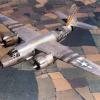Aspen Avionics Information
-
Members Online
- Ragsf15e
- kortopates
- Schllc
- 1980Mooney
- Steve Hughes
- LBM
- andrewn
- Joshua Blackh4t
- GeeBee
- Gee Bee Aeroproducts
- bigmo
- tony
- EricJ
- 67 m20F chump
- exM20K
- FlyingScot
- generalaviationguru
- N800DD
- Pictreed
- Mcstealth
- Steve Dawson
- chrisburdzy98
- MarcJohnson
- KSMooniac
- Stanton R
- hubcap
- Stealth Mooney
- takair
- TCC
- Mmrkulic
- ohdub
- BadMooneyRising
- 00-Negative


Recommended Posts
Join the conversation
You can post now and register later. If you have an account, sign in now to post with your account.